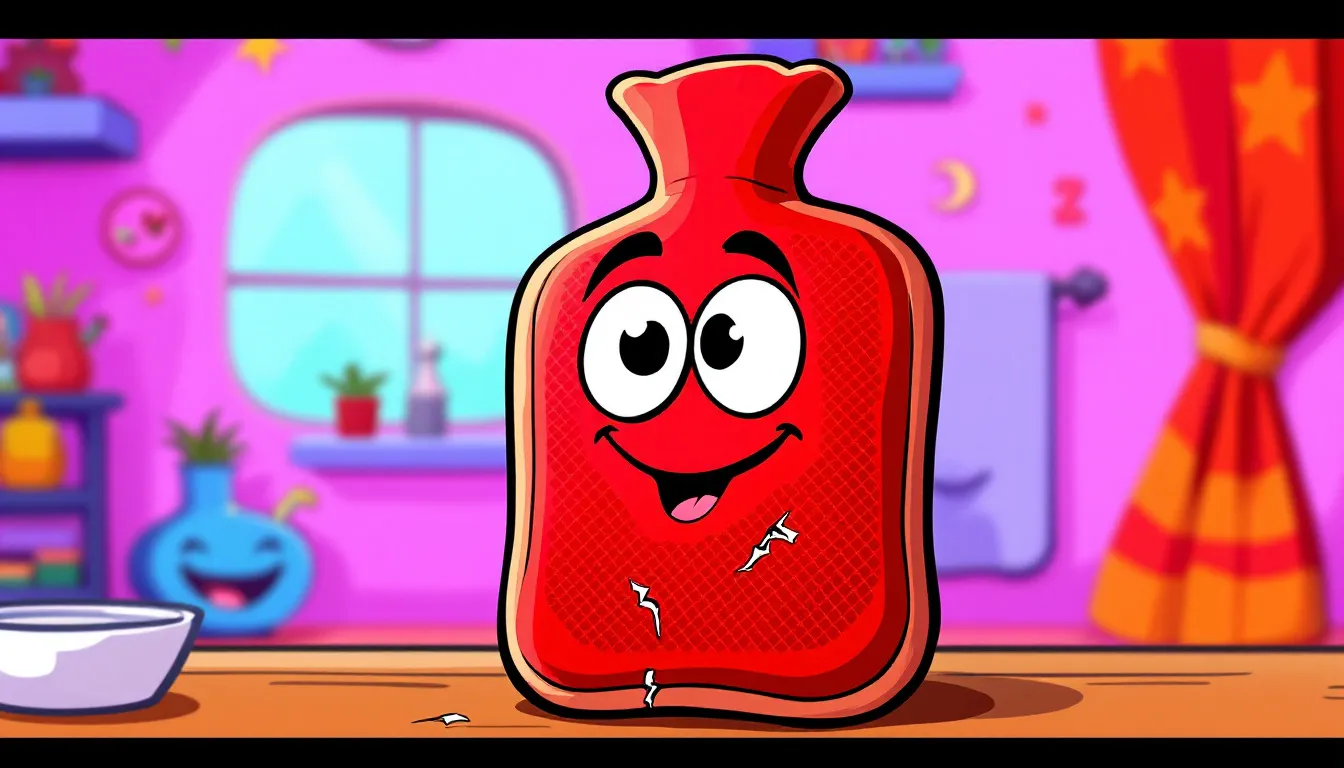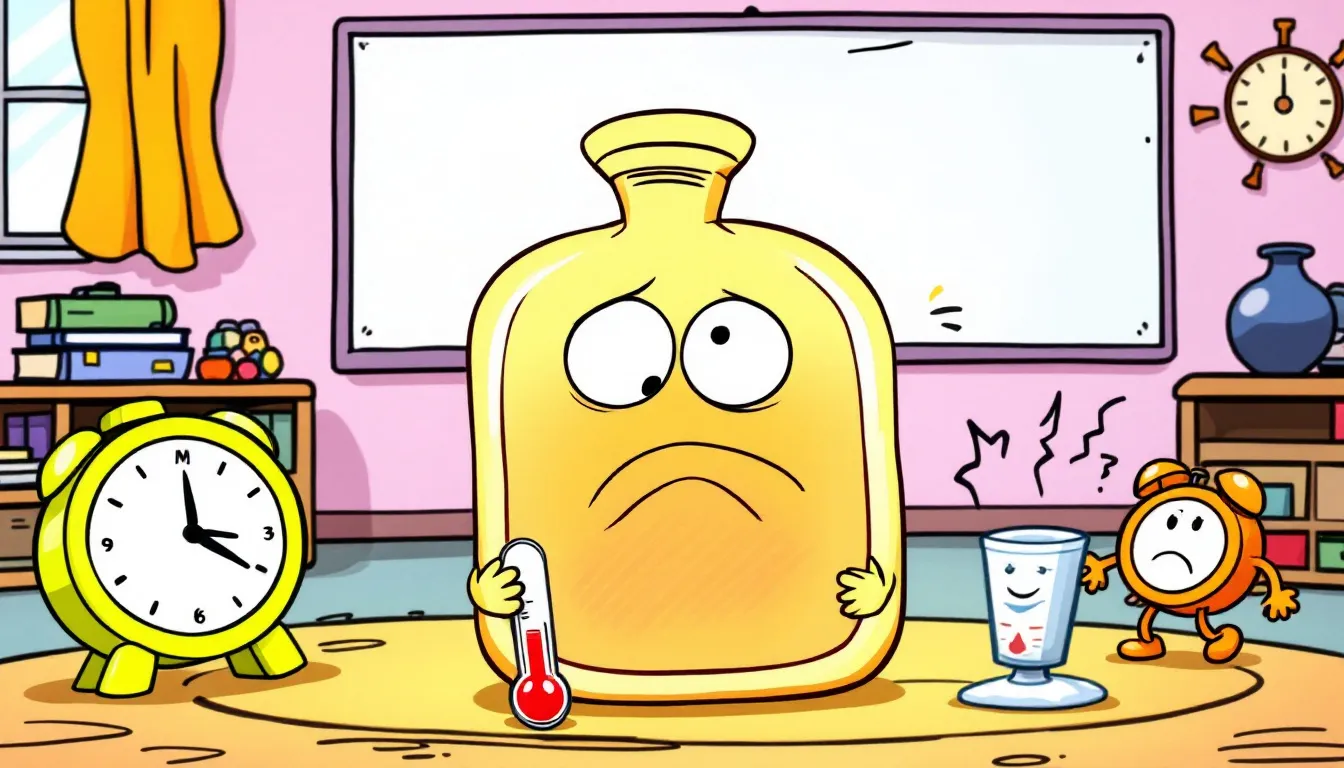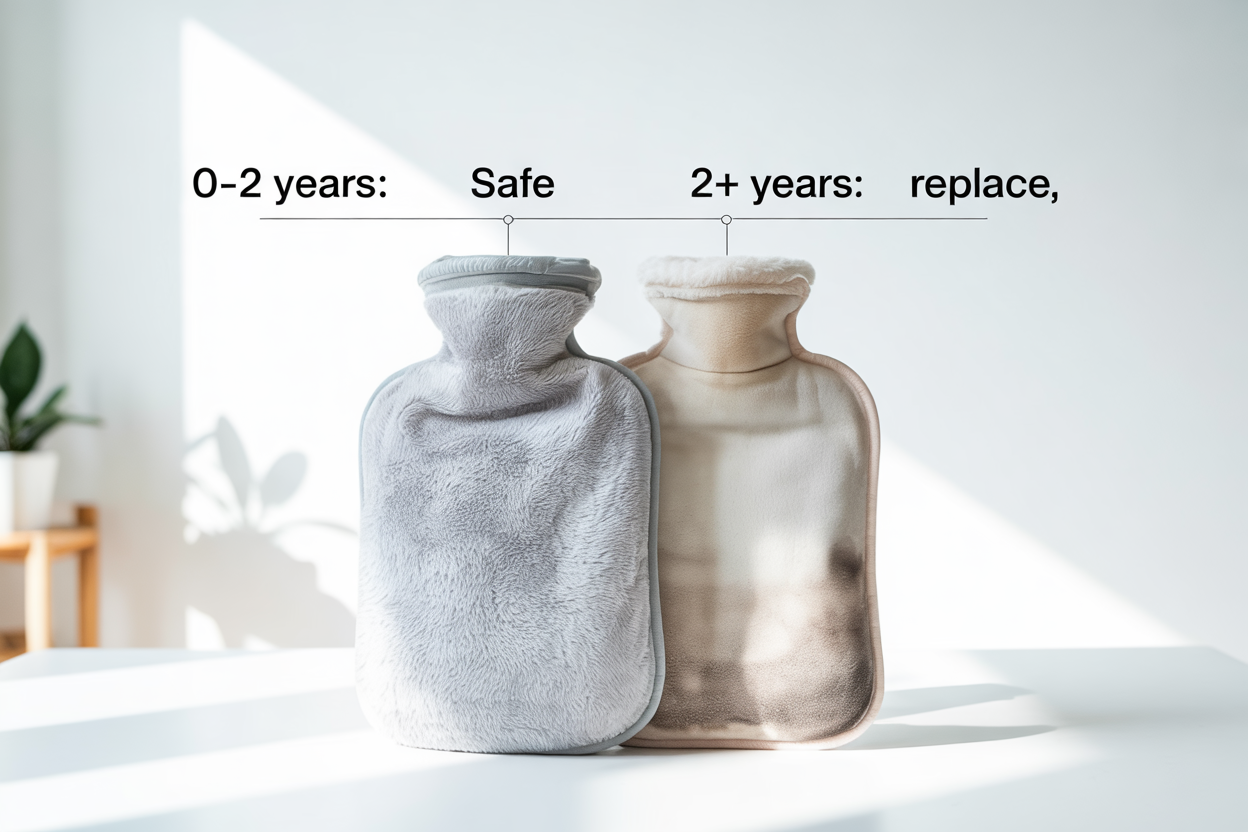
How to Tell if a Hot Water Bottle is Out of Date: Signs to Watch For
How to Tell if a Hot Water Bottle is Out of Date: Essential Tips to Keep You Safe
Trying to figure out how to tell if a hot water bottle is out of date? This guide will show you how to check the manufacture date and recognize signs of wear and tear. Stay safe by knowing when it’s time to replace your hot water bottle.
Key Takeaways
-
Check the manufacture date of your hot water bottle, typically located on the bottle’s neck or top-right corner, using methods such as the daisy wheel stamp and dots inside the cover to assess its age and safety.
-
Regularly inspect your hot water bottle for signs of wear and tear, including cracks, discoloration, and softness of material, which indicate a need for immediate replacement to prevent safety risks.
-
Hot water bottles should generally be replaced every two years to ensure optimal performance and safety, with immediate replacement necessary if signs of deterioration or leaks are identified.
Checking the Manufacture Date

Knowing the manufacture date of your hot water bottle is crucial because it determines the age and replacement need. This date is typically found on the top-right corner or the neck of the bottle. Knowing how to find and interpret this date ensures your hot water bottle remains safe to use.
Manufacturers often use specific markings to indicate the manufacture date. One common method is the daisy wheel stamp, which we’ll explore in detail. Additionally, the note about the dots inside the cover can provide further information about the manufactured production date.
These methods help accurately determine the manufacture date and replacement time for your hot water bottle.
Daisy Wheel Stamp
The daisy wheel stamp is a flower symbol found on many hot water bottles, indicating the year of manufacture. Look for the number in the middle of the daisy wheel stamp to find the production year. This figure indicates when the hot water bottle was made.
The petals of the daisy wheel are divided into segments, each corresponding to a month of the year, including June:
-
The filled segments indicate the specific month of production.
-
Each dot within the petals represents the weeks of that month.
-
The last segment shows the number of weeks for the month.
Interpreting these markings provides the exact production date of your hot water bottle.
Dots Inside Cover
Another method to determine the manufacture date is by examining the dots inside the cover of the hot water bottle. Here’s how to interpret them:
-
The dots indicate the number of weeks within the production month.
-
Count the dots inside the petals to find the specific week of production.
-
Count the petals themselves to identify the production month.
Each dot in a petal signifies a specific week of that month. Understanding this system allows you to pinpoint the exact week and month of manufacture, ensuring your hot water bottle remains within its safe usage period.
Signs of Wear and Tear

Over time, hot water bottles can show visible signs of wear and tear that indicate they are no longer safe to use. Cracks, creases, and discoloration are some of the most common indicators. These signs suggest that the material has started to break down, which can lead to leaks and increase the risk of burns.
Regularly inspect your hot water bottle for these signs to maintain safety. Replace the bottle immediately if any issues are noticed, regardless of age.
Subsections on softened material, discoloration, and expand when filled will provide further details on what to look for.
Softened Material
If the material of your hot water bottle feels unusually flexible or soft to the touch, it’s a strong indication that the bottle has deteriorated. This softened material suggests a significant loss of structural integrity, which can compromise the bottle’s performance and safety.
Flimsy materials in hot water bottles indicate that the rubber has degraded to the point where it may not perform safely. This issue is a clear sign that the hot water bottle should be replaced to avoid potential risks.
Discolouration
Discoloration is another key indicator that your hot water bottle may be out of date. If the bottle has changed color, appearing faded or blotchy, it suggests that the rubber is breaking down. This change is often due to repeated exposure to heat, which compromises the material’s integrity.
Color changes are a clear sign of degrade. Replace the hot water bottle if colour discoloration is noticed to ensure it remains safe to use.
Expansion When Filled
When filling your hot water bottle, pay attention to any excessive swelling or bulging. This visible bulging indicates that the rubber is breaking down, significantly increasing the risk of ruptures.
Swelling or bulging when filled signifies serious material degradation and potential failure. Replace the bottle immediately to avoid accidents.
Performance Issues

Performance issues are another critical aspect to consider with hot water bottles:
-
An outdated hot water bottle may not perform effectively, risking user safety.
-
Over time, hot water bottles can lose their effectiveness, leading to inadequate heating.
-
This decreased effectiveness increases the risk of burns.
An expired hot water bottle may leak and cause burns. The subsections on difficulty retaining heat and leaks and cracks provide further insights into these issues.
Difficulty Retaining Heat
A hot water bottle that cools quickly may have a compromised structure. Rapid heat loss could indicate structural failure in your hot water bottle, which can shorten its lifespan and lead to a lost effectiveness.
Hot water bottles that fail to maintain warmth may indicate material breakdown. Monitoring heat retention ensures the safety and functionality of your hot water bottle.
Leaks and Cracks
Identifying small cracks or leaks is vital, as they can significantly increase serious burns risks. Replace the bottle immediately if any leaks or cracks are noticed to avoid injuries.
Such issues can occur at seams or high-pressure areas, making regular inspections crucial for safety review services.
Safety Precautions

Using an old hot water bottle can lead to serious accidents like burns from leaks or explosions. Following safety precautions can minimize these risks, such as filling hot water bottles only up to three-quarters full to reduce bursting chances.
Expel all air before sealing a hot water bottle to prevent injuries from escaping hot air. Additionally, avoid using boiling water to prevent burns.
The subsections on proper filling techniques, regular inspections, and correct storage provide more detailed safety tips.
Proper Filling Techniques
Always hold the hot water bottle upright while filling it to minimize spills and splashes. Wait to let the hot water cool slightly before pouring it into the bottle to avoid temperature shock.
These techniques ensure correct fill filling, reducing the risk of accidents and ensuring a straight application correctly.
Regular Inspections
It is essential to check your hot water bottle regularly for signs of wear and tear. Here are the steps to follow:
-
Inspect your hot water bottle for damage before each use.
-
Conduct regular inspections to identify issues early.
-
Replace the bottle before it becomes a hazard.
Correct Storage
Store your hot water bottle without any weight on top to prevent deformation and damage. Avoid folding the hot water bottle during storage to prevent material-weakening creases.
Correct storing practices can significantly extend the lifespan of your hot water bottle.
When to Replace Your Hot Water Bottle

Hot water bottles generally have a lifespan of around two years, after which they should be replaced to reduce safety risks. Using a hot water bottle beyond its recommended lifespan increases the risk of severe injuries due to material degradation.
Subsections on the two-year rule and exceptions to the rule will provide further details on when to replace your hot water bottle, for example.
Two-Year Rule
Hot water bottles should generally be replaced every two years to ensure safety and performance. A hot water bottle that fails to maintain warmth may indicate material deterioration, suggesting it needs replacement.
Adhering to the two-year rule helps ensure that your hot water bottle remains safe to use.
Exceptions to the Rule
Hot water bottles should be assessed regularly for safety and efficacy to determine if they need to be replaced sooner than expected. Signs that indicate the hot water bottle is deteriorating and may need replacement include:
-
Softened material
-
Discoloration
-
Expansion or bulging when filled
-
Rapid cooling
Leaks and cracks are critical indicators that a hot water bottle is unsafe to use, necessitating replacing it. If you notice a crack, it is essential to take action immediately.
Summary
In summary, ensuring your hot water bottle is within its safe usage period involves checking the manufacture date, looking for signs of wear and tear, and monitoring performance issues. Regular inspections and proper maintenance are key to extending the lifespan of your hot water bottle.
By following these guidelines, you can reduce the risk of accidents and continue to enjoy the comfort and warmth that hot water bottles provide. Always prioritize safety and replace your hot water bottle as needed.
Frequently Asked Questions
How often should I replace my hot water bottle?
It is advisable to replace your hot water bottle every two years to maintain safety and functionality. Regular replacement helps prevent leaks and ensures optimal performance.
What are the signs that my hot water bottle needs to be replaced?
It is essential to replace your hot water bottle if you notice softened material, discoloration, expansion when filled, leaks, or cracks, as these indicate potential safety hazards. Ensuring your hot water bottle is in good condition is crucial for effective and safe use.
How do I find the manufacture date on my hot water bottle?
To locate the manufacture date on your hot water bottle, check the top-right corner or the neck, where it is often indicated with a daisy wheel stamp or dots inside the cover.
What are the proper filling techniques for a hot water bottle?
To properly fill a hot water bottle, ensure it is held upright, allow the hot water to cool slightly before pouring, and only fill it to three-quarters full to minimize the risk of bursting.
How should I store my hot water bottle to extend its lifespan?
To extend the lifespan of your hot water bottle, store it without any weight on top, avoiding folding, in a cool, dry place. This will help maintain its integrity and prevent damage.





